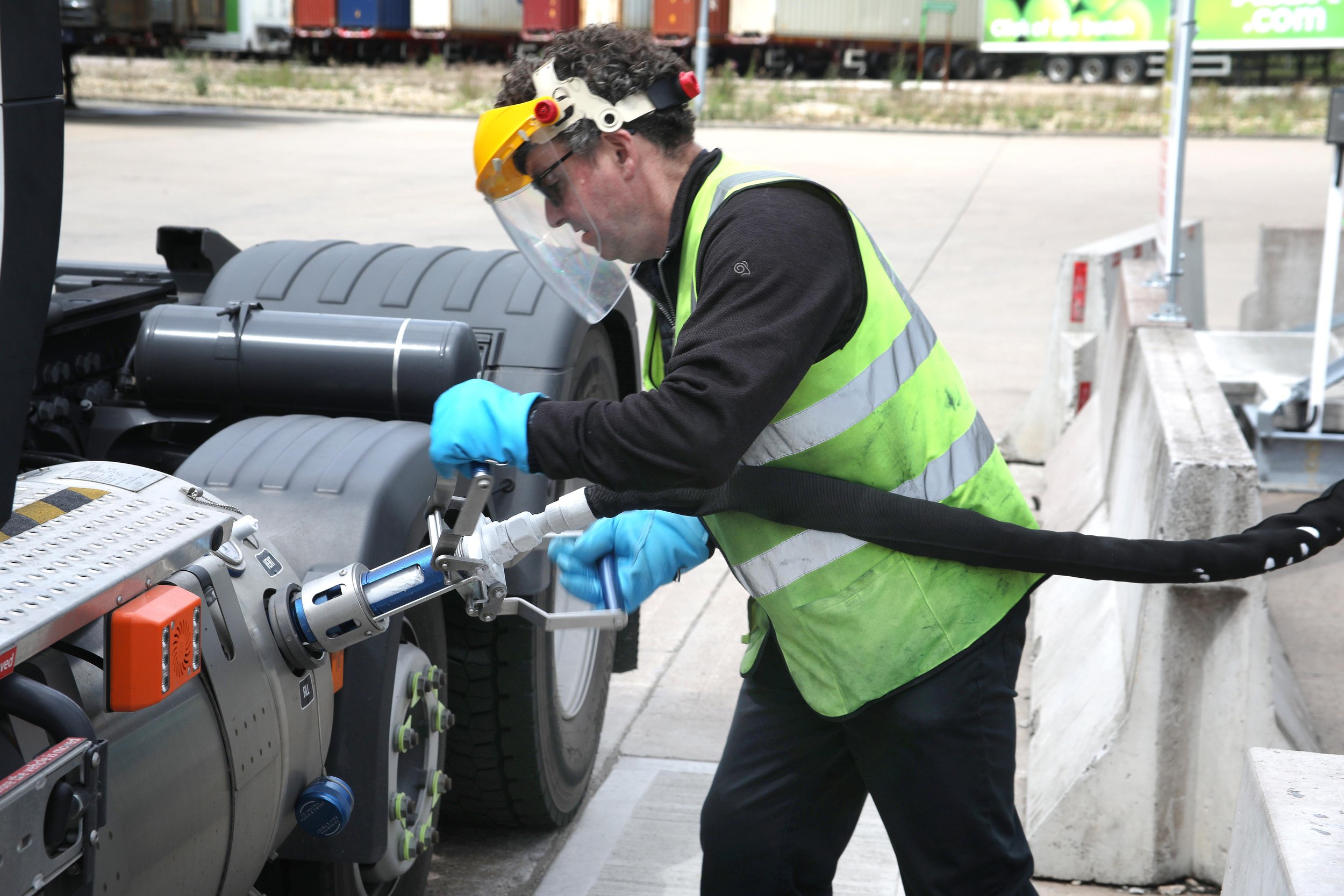Knowledge zone
Everything you need to know about gas vehicles and the UK gas refuelling network.
Reducing emissions
-
Both fuels will typically reduce emissions by around 80-90% compared to diesel. By operating a gas tractor unit on trial you could assess the performance of a gas vehicle on your fleet and Gasrec can help you understand how many tonnes of CO2 your fleet can save.
-
Gasrec has entered into a long-term supply agreement with its shareholder, BP, to supply biomethane (i.e. Bio-LNG and Bio-CNG) to the transport market. The initial agreement is for supply over ten years, giving our customers certainty over supply for multiple truck lifecycles.
-
Biomethane (Bio-LNG and Bio-CNG) come from any organic materials, such as agricultural waste and food waste. Gasrec sources its biomethane from across the UK and EU.
-
Gasrec supplies biomethane to the UK market under the Governments Renewable Transport Fuel Obligation scheme (RTFO). As such, all fuels are subject to quarterly validation processes and audits to ensure transparency and tracability. In addition, Gasrec's is part of Zemo's Renewable Fuel Assurance Scheme (RFAS) which audits the fuel declarations given to customers. As a Gasrec customer, you'll be issued a fully audited fuel declaration quarterly.
Cost and savings
-
You'll typically save around 20-40% on fuel compared to a diesel vehicle. This is partly down to the cheaper fuel costs, but also becuase there is more energy in a KG of gas than there is a in a litre of diesel. To get the same amount of energy from the fuel you would need 1 litre or diesel, but only 0.72kg of gas.
-
Yes - duty is just under 23p/kg at present, compared to around 53p/l for diesel. This differential is set to continue over the long-term, with it currently being guaranteed until 2032, with an extension expected after that.
-
Like diesel, gas is a traded commodity and will always be open to some level of price risk. However, since the energy crisis of 2021-2022, Europe's gas supply market has restructured with more diversified supply chains and as such gas prices have returned to pre-crisis stability.
Using refuelling stations
-
If you want to make use of any of Gasrec's public stations, just get in touch and we'll talk you through the process. Usually it will involve a short session of driver training, then giving you a fuel card and away you go.
-
This is site-dependent, if you have a specific site you'll like to discuss access to, just get in touch and we'll let you know.
-
Gasrec can offer skidded and permanent depot-based solutions. Typically Gasrec will install, operate and maintain this for you.

Fuelling with confidence
Quick, safe and simple
Refuelling with LNG is a fundamentally safe and secure process, with a very low risk of hazard to station users.
Gasrec will typically support new LNG fleets with training and familiarisation and drivers will soon find it to be just like diesel refuelling - simple, quick and safe.
Operating gas vehicles
-
In all intents and purposes, they are very similar to diesel. Years ago diesel vehicles would be converted after-market to have gas capability, now a number of OEMs (Volvo, Scania and Iveco) supply them directly from their factories.
-
Gas models are equivalent to their diesel companions. This means load carrying capacity is equal to diesel engines of the same size all the way up to 44-tonne. Some CNG factory-made vehicles are 40 tonne.
-
Gas vehicles go all the way up to 500bhp, which gives drivers plenty of pull on the road. In terms of range, typically they will see around 700km for a 6x2 LNG model, or a little less in CNG models.
Purchasing gas vehicles
-
Gas vehicles have typically been around 30% more expensive than diesel vehicles, but we're now seeing evidence that this is coming down towards parity between the vehicle types.
-
This market is developing, with some buoyancy starting to be shown in 2024.
The refuelling process
-
Most aspects of the refuelling experience are like diesel. Drivers sign-in using the fuel management system, recording the registration and kilometres travelled. For LNG the fill nozzle is clamped onto the vehicle tank and requires the use of PPE (gloves and glasses) to protect bare skin and eyes. Gas vehicles take no longer than diesel to refuel.
For CNG the fill connection point is more like a plug. Fill time for CNG will be slightly longer than for LNG.
Training is provided in advance of deploying vehicles to the operators’ key team, usually on a train-the-trainer basis. Once training has taken place drivers are provided with keys to use the fuel management system.
-
Stations are designed with safety at the core. The stations automatically go into hibernation mode if gas or heat is detected and trigger alarms on the station and at a remote monitoring centre (with CCTV links to the station or a trained operator present). The remote monitoring centre can interrogate the station systems and take the appropriate action. The refuelling methods mean there are no spills or leaks; if these do occur gas rapidly disperses to atmosphere rather than pooling on the ground like diesel and causing risk or contamination hazards.
-
Fuel is delivered to the vehicle in either liquid or compressed form and there are different risks and mitigations related to both. LNG is stored at temperatures of down to -160oc and therefore requires PPE to be worn to protect against cold burns. CNG is stored at high pressures, it is therefore important to maintain inspection regimes to ensure the integrity of refuelling hoses, nozzles and storage tanks. In all other respects, gas is no more dangerous to use than diesel.
Something missing?
If there’s something else you want to know, leave a message below and we’ll come back to you.






